CR-V renews duel with Escape at LA show
By John Gilbert
LOS ANGELES, CALIF. — The earthquake and ensuing tsunami that struck Japan in March of 2011 affected the supply of parts enough to set back production of Japanese automakers all around the world. For Honda, the resulting shortage of the Honda CR-V compact crossover helped Ford Escape sales shoot by and supplant the CR-V as the top-selling SUV in the U.S.
If the Escape and CR-V are going to duel for supremacy in 2012, they will be doing it with entirely new vehicles — unveiled to the public for the first time at the Los Angeles Auto Show. Other indications from the same show, which runs through Thanksgiving Weekend, are that the new Escape and CR-V will have plenty of competition.
Much like golf and tennis, the auto show circuit in the United States also has its four “majors,†which stand above the numerous regional shows to compete with each other, and the Los Angeles Auto Show kicks off the new season, to be followed by the Detroit Auto Show in early January, the Chicago Auto Show in February, and the New York Auto Show, which comes in April.
Since moving its date to November, the L.A. show has gained prestige, and last year may have become the most significant, with the domestic Big Three all moving some of their biggest introductions from Detroit to L.A. The Chevrolet Volt, Ford EcoBoost models, and Chrysler’s resurgent redesigns under Fiat tutelage all jumped to join the previously import-dominated Los Angeles show.
With only a few key vehicles, such as the Ford Fusion and Chevrolet Malibu, being held off for Detroit, this year’s Los Angeles show stakes its importance on another strong array of new products, led by the Escape, the CR-V, and other compact crossover SUVs such as the Mazda CX-5, plus production versions of the Range Rover Evoque, and Mercedes ML320.
The CR-V became available to the automotive media a month earlier than the show, but Honda restricted reports on the new vehicle until its official introduction, which came at the L.A. Show. The new CR-V has totally new design in its fourth generation.
The first CR-V was a 1997 model, and was an interesting attempt at making an all-wheel-drive compact utility vehicle. It sold well, competing with the Toyota RAV4 in popularity, and its first renewal came for 2002 when its shape was refined and less boxy. The third generation came in 2007, and closely followed the RAV4’s new model, which was lengthened by more than a foot and added a third-row seat and a V6 engine option. Honda stuck by its more-compact design, with two rows of seats and only a strong 4-cylinder, and it left critics — as well as the RAV4 — behind in sales by taking over the No. 1 slot.
That third-generation model was a considerable change in appearance, with something like a half-circle silhouette rising from the windshield and tapering off to the rear deck. It continued to demonstrate a combination of size, performance and versatile packaging, coupled with with a high standard of initial build quality to remain No. 1 in sales through 2010.
Akio Tonomura, CR-V project leader for Honda, said the vehicle has matured from its first “comfortable runabout†stature through the more-recent casual-formal model that sold 4.9 million in 160 countries. Competition has increased, with impressive new compact crossovers that include the Hyundai Tucson and Kia Rio from Korea, the Nissan Rogue, as well as the RAV4 and the Escape, which grew from an original design for the Mazda Tribute. Changing lifestyles and the economic slump and environmental problems have affected the marketplace.
“But the wants of consumers are unchanged,†said Tonomura. “The fourth generation CR-V improves on being efficient, functional and confident, fused together through synergy. It has the comfort of a passenger car, the versatility of a minivan, and the confidence of an SUV. Only the CR-V can top the CR-V.â€
When the Escape moved ahead of the CR-V in 2011 sales, however, the timing was right for Ford to also bring out a totally new vehicle. The original has served Ford well, built by Ford in a Missouri plant that also has made the Tribute for Mazda. The Tribute has been discontinued, perhaps as part of Ford’s separation from its previous connection as chief investor in Mazda, and Ford is taking the Escape a different direction.
For 2012, the Escape is built on Ford’s global C-Platform, which also underpins the Focus sedan. The popular hybrid version of the Escape has been discontinued as well, but Ford is giving the new and much more stylish Escape a pair of new engines, with the 1.6-liter turbocharged 4 and the 2.0-liter EcoBoost 4joining the reliable 2.5-liter 4. The 1.6 turbo develops 170 horsepower and the 2.0 EcoBoost, with its turbo turning out 240 horsepower.
Those versions give Escape an advantage over the CR-V, which will stay with the proven 2.4-liter 4 and its 5-speed automatic transmission — while Ford, Hyundai and Kia, among others, go to 6-speeds — but Honda officials suggest that overcoming the six-month effect of parts and product shortages should boost the CR-V back to its normal position. Honda claims different gear ratios allow better acceleration, even with the 5-speed, and the 2.4 has dual overhead camshafts with i-VTEC variable valve-timing, improving horsepower by 5, to 185 at 7,000 RPMs, with 163 foot-pounds of torque at 4,300 RPMs.
The base CR-V LX has front-wheel drive, with the EX and EX-L (leather) offering Honda’s real-time all-wheel drive, which has been revised considerably on the new vehicle. Until now, the CR-V’s awd system was front-wheel-drive biased with front and rear hubs, and power transferred to the rear whenever the front encountered slippage. The new system uses an electronic clutch to determine where the better traction is and send it there. When cruising, the rear power disengages, but 100-percent of torque could go to the rear when the front slips, but the new system always provides all-wheel-drive traction on launch.
While shorter, by 0.8-inches, the CR-V is an inch taller and has expanded interior room. A lower hip point in rear seating also enhances interior space. The interior also has a more upscale feel, with a large console that will house a purse and improved instrument panel. The body itself is made 7 percent stiffer in bending rigidity and 9 percent in torsional rigidity, allowing responsiveness to improve by 40 percent. Improved Quietness is enhanced by more insulation and sound-absorbing materials, and a lower cargo floor, with side restraining nets, increases cargo volume from 35.7 to 37.2 cubic feet with the rear seat folded down. Improved connectivity allows hands-free responses even to text messages, but while the CR-V has a chip that is compatible with some Blackberrys, it is not compatible with iPhones.
As expenses go, the CR-V starts at $21,000 with front-wheel drive, and EPA fuel economy estimates of 23 city/31 highway, and the price goes to $30,000 with the top EX-L with all-wheel drive, and EPA figures of 22/30.
One of the more intriguing new challengers to the Escape vs. CR-V battle comes from Mazda. A little-known fact is that when Ford wanted to start building a compact crossover, it checked with its affiliates, and since Mazda was about finished with the Tribute, Ford offered to build both the Tribute and the Escape in the U.S., so while most people believe Ford gave Mazda the Tribute, in reality Mazda gave Ford the Escape. The two shared engines, with Mazda supplying the 4, and Ford the V6. Now that they’re separate entities, Mazda has recently introduced its new “Skyactiv†engine technology, which is a holistic renovation to its 2.0-liter 4 with a smaller bore, longer stroke and improved features throughout, including a new 6-speed automatic transmission that combines the best attributes of a normal automatic and a direct-sequential gearbox, without the liabilities of either.
Mazda unveiled the CX-5 as the smallest of its three sleek SUVs, next to the full-size CX-9 and the mid-size CX-7. Mazda claims to have the youngest new-car audience in the industry,and it is arming the CX-5 with a new chassis, design, and the Skyactiv engine and transmissions — including a 6-speed stick or 6-speed automatic. It looks good, and promises to go with power and heightened fuel economy, judging by the Mazda3 with Skyactiv.
Among other noteworthy introductions at the Los Angeles show were:
- Chevrolet Spark — On the tailpipes of the new Sonic subcompact, Chevrolet brings out the Spark, which is 14 inches shorter than the Sonic, but with more interior space than any other in the “mini†segment. A 1.2-liter engine with 5-speed stick will power the Spark, which will follow in 2013 with an all-electric version.
- Cadillac XTS — Replacing the STS sedan, which was Cadillac’s first departure from large, boxy styling, the XTS has more of a large-car look, and is on the STS-like large front-wheel-drive platform and is expected to be available with all-wheel drive.
- Hyundai Azera — The forgotten sedan in Hyundai’s rapidly expanding and renewed line, the Azera is slotted between the popular mid-size Sonata and the entry-luxury Genesis. Unlike the Genesis and the larger luxury Equus, the Azera is what Hyundai says is its most dramatic example of “fluidic sculpture design,†and will be loaded with interior features — plus, for northern-tier drivers, the direct-injected 3.3-liter V6 with 293 horsepower will operate via front-wheel drive.
- Fiat 500 Abarth — For those who think the new 500 is cute but underpowered, Fiat’s Abarth version adds a twin-intercooled turbocharged engine with a torque-transfer control system and a manual transmission. It comes in racy black with stripes, unlike the Jennifer Lopez-promoted Gucci version, and Fiat global head Olivier Francois Olivier says, the Abarth is “for those people who can hear the one Italian voice in the chatter of a crowd. It offers the freedom to indulge, to awaken the senses to the type of freedom America was built on, and to make a little difference on the endless roadways of America.â€
- Audi S4, S6, and S8 — Following up on the new A6 and A7 for 2012, Audi introduces high-performance versions of all three of its primary sedans, with the compact A4, mid-size A6 and large and luxurious A8. The “S†designation means stronger engines, suspensions, steering and performance.
- Ford — The 2013 Mustang fleet was unveiled, all of them with redesigned noses. The Boss 302 finally gets the side stripe right, with the 3M glass-bead reflective stripe running down at a diagonal angle from the hood, then straight back, reminiscent of the 1970 mainstay. And a Shelby GT500 model, with Carroll Shelby making an appearance to say it’s his favorite car, ever. With a 5.8-liter supercharged V8, it pumps out 650 horsepower and will top 200 miles per hour. Ford pulled off a coup, introducing the cars at a Press Preview Eve showing, 18 hours before Chevrolet introduced the ZL-1 Camaro, as the most powerful one ever, with a top speed of 184 mph.
- Electricity made continued strides, with BMW showing two all-electric models, Audi its E-Tron, and the Honda Fit E-V. Also, the Fit Natural Gas model won the show’s “green car†award. Also, Motor Trend magazine chose the show to name the Volkswagen Passat as its 2012 Car of the Year.
Comments
Tell me what you're thinking...
and oh, if you want a pic to show with your comment, go get a gravatar!


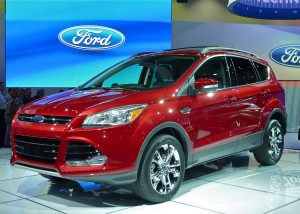
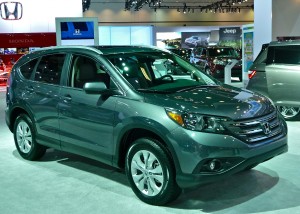

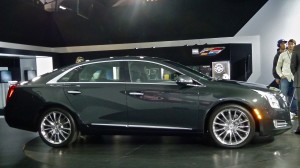
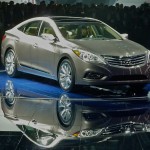
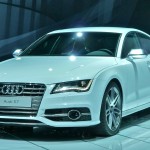
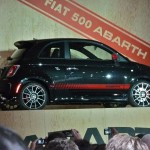
 John Gilbert is a lifetime Minnesotan and career journalist, specializing in cars and sports during and since spending 30 years at the Minneapolis Tribune, now the Star Tribune. More recently, he has continued translating the high-tech world of autos and sharing his passionate insights as a freelance writer/photographer/broadcaster. A member of the prestigious North American Car and Truck of the Year jury since 1993. John can be heard Monday-Friday from 9-11am on 610 KDAL(www.kdal610.com) on the "John Gilbert Show," and writes a column in the Duluth Reader.
John Gilbert is a lifetime Minnesotan and career journalist, specializing in cars and sports during and since spending 30 years at the Minneapolis Tribune, now the Star Tribune. More recently, he has continued translating the high-tech world of autos and sharing his passionate insights as a freelance writer/photographer/broadcaster. A member of the prestigious North American Car and Truck of the Year jury since 1993. John can be heard Monday-Friday from 9-11am on 610 KDAL(www.kdal610.com) on the "John Gilbert Show," and writes a column in the Duluth Reader.